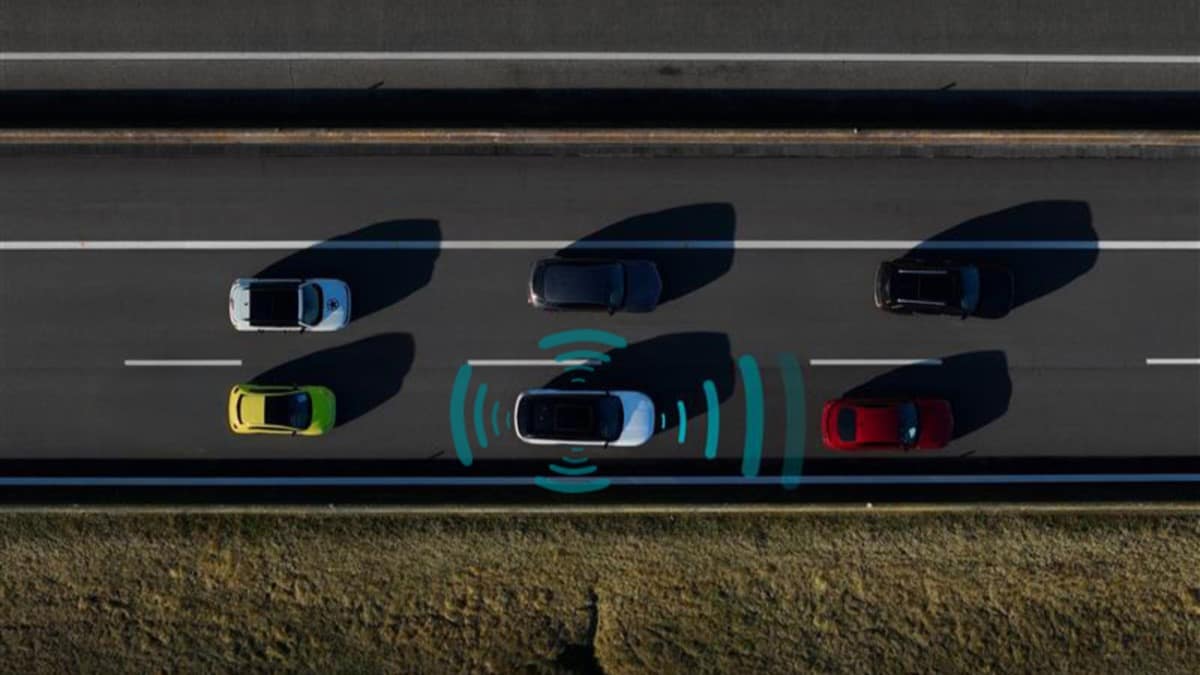Stellantis, parent company of Jeep, Dodge, Ram, and other brands, may become just the second automaker in the U.S. to offer an advanced driver assistance system that lets drivers take their hands off the wheel and their eyes off the road.
Stellantis has unveiled a new system it calls STLA AutoDrive (pronounced “Stella AutoDrive”) that can take over driving in limited conditions, even allowing drivers to safely look away from the road.
The company has not said when it will be available to buyers.
Just One “Level 3” System in the U.S. Today
STLA AutoDrive is a Level 3 automation system, which requires a bit of explanation.
Automakers use a framework created by SAE, formerly the Society of Automotive Engineers, to discuss autonomous driving. It sorts driver assistance systems into five levels.
Related – Self-Driving Cars: Everything You Need to Know
At Level 1 are simple systems most automakers use today, like smart cruise control that keeps your car a set distance from the vehicle in front of it.
At Level 2, several such systems can work together, like a smart cruise control and a lane-centering system. Drivers can sometimes remove their hands from the wheel but not their eyes from the road while using a Level 2 system. The most heavily advertised and well-known systems today, such as Tesla’s Full Self-Driving (Supervised) and GM’s Super Cruise, are Level 2 systems.


At Level 3, the driver can safely look away from the road and perform other tasks (like reading) while the car handles the driving under limited conditions. But the driver must be ready to take over at a moment’s notice if prompted.
Mercedes is the only automaker with an approved Level 3 system in the U.S.
States regulate the systems, so to go nationwide, any system needs separate approvals from each state.
Related: First (Not) Drive Video—Mercedes-Benz Drive Pilot
Mercedes’ Drive Pilot system is legal only in Nevada and California. At this time, Mercedes sells it only in its flagship S-Class and EQS sedans.
BMW sells a Level 3 system in Germany, and Honda has one in Japan. Neither automaker has disclosed specific plans to bring them to the U.S.
Should Stellantis choose to sell STLA AutoDrive, it could be the second such Level 3 system on the U.S. market.
How It Works
Stellantis says STLA AutoDrive works at 37 mph or under and can function even at night and in the rain.
At higher speeds, it converts to a Level 2 system — hands-off but eyes-on, like Ford’s Blue Cruise or GM’s Super Cruise.
With time, Stellantis plans to update the system to work at speeds up to 59 mph. A short video sent to the press suggests it could someday work off-road as well.
It maps its surroundings using “an advanced suite of sensors.” Stellantis doesn’t specify what sensors it employs. But most automakers researching similar technology have used some combination of cameras, radar, lidar, and ultrasonics.
Tesla alone employs only cameras.
Stellantis says its sensors can wash themselves to stay functional in dusty environments.
No Plans to Sell Just Yet
A Stellantis spokesperson tells Kelley Blue Book, “The technology is fully developed and ready for deployment. However, the current market for Level 3 autonomous driving is very limited. We have made the strategic decision not to launch it at this time. Once the market opens up and becomes more receptive, we will move forward with introducing this advanced technology.”
When they choose to launch, it might not be in the U.S. A more straightforward regulatory market might make Europe an easier first target. Stellantis owns several predominately European brands, including Fiat, Alfa Romeo, Citroën, Peugeot, and Vauxhall.
The company says its system “is ready for deployment and can be adapted for global markets across Stellantis branded vehicles, ensuring a smooth rollout as commercial strategies align with market demand.”
Still Some Practical, Legal Questions
As automakers get closer to truly self-driving cars, new practical and legal questions emerge.
State laws don’t yet specify who is liable for an accident caused by a self-driving system, for instance. Mercedes has agreed to accept liability for accidents caused by Drive Pilot in the states where the system is allowed.
The debut of Drive Pilot also raised another legal question: How are police to spot a distracted driver if it’s okay for some drivers to be distracted? Mercedes has proposed that the industry adopt turquoise exterior lights as a symbol to tell police when a Level 3 system is engaged.

